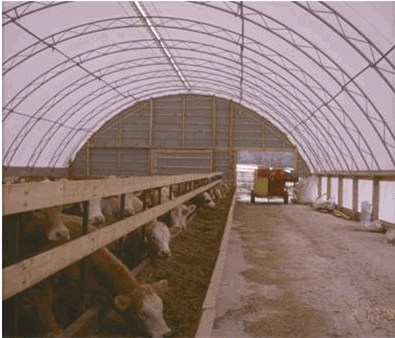



Natural Feeding Programs - Concepts for Tweaking Feedlot Diets
By Christoph Wand - Beef Cattle & Sheep Nutritionist/OMAFRA. With the increasing trend by North Americans towards health conscious diets, the trickle-down to the beef industry appears to be a growing interest in beef produced from animals with a minimum of pharmaceutical intervention.'Natural' Programs on the Radar
While there may be discussion about whether these products actually have health attributes beyond regular beef, there appear to be consumers willing to pay a premium for these products. Since one of the fundamental principles of marketing is to provide customers with what they want, the industry should "feed" this desire. This will help maintain or increase beef's share of the meat counter. It may achieve potential price premiums for producers who are positioned to supply that product. While cost of production may be higher, a price premium at retail can make this a winning strategy, as long as the financial benefits are shared through out the production chain. Before taking on a program, here are some nutritional factors to consider that may help clarify the consequences of going "au natural".
Bye-bye Implants
The ban on implants in virtually all of these programs reduces the overall lean gain potential, and may increase the partitioning towards fat. Assuming mid-potency implants (which could provide about 10% improved gain or feed-to-gain) are prohibited, a 10% loss of efficiency means about 10% more days on feed. The ration could be formulated with slightly less protein, and a little less energy too, a savings to counter reduced performance. As a result, the premium on live weight needs to be about 2%, and somewhat higher for producers paid on the rail. Additional carcass settlement premiums may be required as some implants are known to increase dressing percentage by 2% to 5%, depending on implant formulation, gender and end-point. However, some aggressive implants (eg. TBA-type) have been implicated in increased dark cutter rates, so eliminating them will lower that risk, another potential saving.

Ionophores: Be Gone!
Although not absorbed in appreciable amounts by the animal, ionophores are active as antibiotics within the rumen, where they selectively reduce the populations of some microbes. The fine points of their function is lost on consumers, who often interpret the term "antibiotic" in negative way. Energy partitioning towards fat may also be increased once ionophores are removed due to the change in rumen energy partitioning. Ionophore removal will also reduces tolerance for ration grain content, as ionophores protect against acidosis. With higher acidosis risk, we can predict a marginally higher (0.75%) death loss and the ration requires increased ration forage content as corn silage, to reduce grain content. In this scenario, increased corn silage reduces cost of gain, assuming cattle can utilize it efficiently. Days on feed may be extended by 8%, due to the loss of the accepted efficiency improvement due to ionophores. The price premium to compensate for this factor needs to be in the range of 1% to 3%. In rations where high moisture corn or finely ground grains must be used, feedlot operators should consider alternatives to ionophores for the control of acidosis, such as increased levels of ground dry hay or even sodium bicarbonate (baking soda) buffers.
Say Goodbye If You've Been Needled
A zero antibiotics scenario is doable provided producers have conventional marketing channels through which treated animals can be marketed so that health intervention is not withheld. This optimizes animal welfare as well as the performance of a 'natural' system.
Urea
Non-protein nitrogen is a very economical way to meet protein needs in many rations. Some natural programs do consider feed grade urea as acceptable, while others rank it as an unnatural chemical. Where permissible, this product may be a good option even in rations with high protein commodities (such as distillers grains), particularly later in the feeding period when soluble N is limiting in the diet.
The Bottom Line
The price premium required to cover a scenario where conventional steer beef producers are to produce 'natural' cattle is in the range of 4% to 7%. This requires giving up ionophores, implants and antibiotic use. Rations need to be re-built from the bottom up to consider issues like particle size and grain content as they relate to acidosis control. Ration protein also needs to be reviewed for requirement (as related to implant removal) and potential protein sources, including urea. Finally, consider the level of ration energy to avoid over-finishing, keeping in mind the energy partitioning effects of both ionophores and implants. Producers should consider a higher forage level in a 'natural ration'. Maybe it's time to dust off some of the results of the high forage finishing ration research that has been done here in Ontario…November 2007


